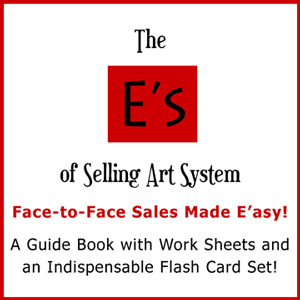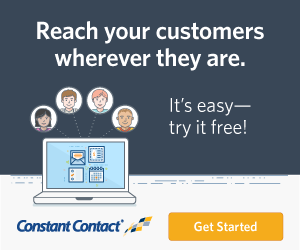Are you losing sales to these UFO’s?
My last blog was all about the “Unidentified or Forgotten Objections”.
This one is about “Unnecessary Fear-mongering Obsessions“.
That previous blog warned that a lack of information can hurt sales. Read that if you missed the chance. However, the other end of the spectrum is telling people nitty gritty details or even putting out totally unneeded warnings.
Some mention of care instructions is important such as “dry clean only” or in some cases it’s required by law to warn of a choking hazard. However, I occasionally see very over-the-top warnings or explanations that are totally not needed. Even a subtle hint that something can or might go wrong can be a big turn-off.
It’s a fine line, but if you cross it, you will loose sales.
Would you buy these shoes?
- Be sure to tie the shoe properly.
- Be sure to put your heel down first then rock forward to your toes to maintain proper balance and prevent sprains.
- Be sure to be extra careful when walking or running on slippery surfaces.
- Be sure to keep from dropping anything heavy on the top of the shoe – this is not a steel toe shoe.
- Be sure to wear clean socks to avoid bacteria or fungus from developing inside the shoe. Wearing any shoes without socks should be done at your own risk.
- Be sure to avoid walking or running in mud as this could discolor or otherwise damage your shoes appearance.
- Be sure to avoid wearing these shoes to the airport as they are harder to put back on because of the lacing. (Just had to throw in that last one since I am doing a lot of speaking engagements requiring air travel lately!)
My guess is you are chuckling a little bit and also saying to yourself, “No one would write out a list like that.”
A Case Study
While that list might be unlikely, in this real case study I found virtually the same kind of irrational and unnecessary warnings.
The client is a artist who has a knock-out CV (resume) and a successful career as a painter. There had been no sales on the “new” website. This newest version, just under a year old, was beautiful and easy to navigate. The stunning artwork was easy to view. This site, which now included a link to a shopping cart, should have been rocking and rolling with sales galore! I was scratching my head until I got to a page called “How to display and care for your purchase” and the alarm bells went off. More than half of it was devoted to original oil paintings and the rest to reproductions.
There were over 500 words explaining about the damage that can be caused by putting a painting in various different rooms (four rooms were in the description) or certain lighting situations or temperature ranges. Within the obsessive details, the kitchen was listed as “dangerous” for the art because there is a lot of “grease particles that will get trapped in the oil painting’s surface that could damage the art.” There was even a part about avoiding using perfumes or hair spray near paintings located in a bathroom. “The chemicals could damage the surface of your painting over time with multiple exposures.”
Why did this sales killing page exist?
I was inform by the artist that this was an attempt to mimic conversations from live events. Sales online were sparse with the “old site” and the thinking was that there was a lack of information. At an art fair or gallery showing, the artist was able to convey this kind of information in person.
However, since this is a website and no conversation can take place, this seemed to “cover” all the scenarios possible. The artist was sure that this would increase sales because it showed a kind of no-hold’s-barred caring and sharing attitude. Hence, the pendulum swung to the opposite end.
I pointed out that, for the 1% that might like a 5 column chart comparing ink fade resistance levels, the other 99% would just click away. They have now become concerned that the ink will fade “someday” or can’t deal with having to consider what room in their house is the least damaging for art. Yikes!
I replace that page with a simple statement placed on the about page: “After much research, I know I am using the best materials for my collectors who want and expect longevity and heirloom quality art.” Good-bye chart! Good-bye page!
The stats for the site improved overall. People started lingering on the gallery pages longer – shopping. Eventually there was a sale. Then another. (By the way, much of the artist’s “desire to inform” was also affecting in-person sales opportunities, too. Are you over-selling or over-emphasizing irrelevant topics in your live selling situations? I can help with that.)
But there is no reason to share information about the best temperature range to keep foods fresh or how to clean the surfaces. It might – and I stress might – be valuable to let the buyer know that a free “How to Store Food Guide” is included, but learning about how to store food is not important to making the purchase. That said, learning the free guide exists might be very important for closing a sale.
When in doubt, answer this question: Will this information make a purchase more likely or less likely? Will it add to desire or kill momentum?
Stay Tuned for one more part of this UFO Series: Underutilizing Free Offers
That “How to Store Food Guide” is a very important tool for a different sales and marketing reason altogether: use it as a free download in exchange for signing up to get email alerts for future special events or promotions.
In my next blog, I will uncover this simple marketing principle in more detail.
Make sure you are on my list so you won’t miss this next blog post!
Don’t be left out! Join my list!
Wondering if your website has the right balance? Email me and I can take a quick peek.
And as always, I love your comments! Please add in your thoughts below.







Read and add your comments!